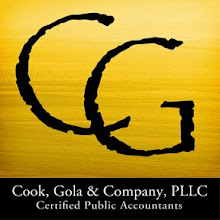- Regain control of the audit committee agenda. Improve the efficiency of committee meetings by insisting on quality pre-meeting materials, spending less time on low-value activities, and engaging in discussions rather than listening to presentations.
- Understand the risks posed by cost reductions made in response to the economic crisis. Every audit committee should be asking whether a "cost-reduced" business model can be sustained. Now is not the time to cut-back on internal audit’s budget.
- Focus closely on all financial communications. Reconsider the types of earnings guidance the company issues. Engage early on in reviewing 2010 disclosures, particularly those regarding risk, compensation and governance. Understand the company’s policy on the use of Twitter and other social media networks to reach investors and customers.
- Continue to monitor fair value issues, impairments, and management’s assumptions underlying critical accounting estimates. There are important new financial reporting developments such as accounting for transfers of financial assets, revenue recognition, and IFRS that may require attention from the audit committee.
- Rethink the audit committee’s role in risk oversight – with an eye to narrowing the scope. Does the audit committee have the expertise and time to deal with strategic, operational, and other risks? Is the expertise of other board members being leveraged?
- Make sure internal audit is properly focused and fully utilized. Help refine and focus internal audit’s activities on key areas of risk. Internal audit is not accountable or responsible for risk management, but it should provide some assurance to the audit committee regarding the adequacy of the company’s risk management processes.
- Prepare for the potential impact of key public policy initiatives on compliance, risk, and governance processes. Major public policy changes will affect many companies and industries, and may impose additional reporting, transparency, and compliance obligations. This will likely lead to new requirements for compliance, risk and governance oversight processes.
- The economic crisis continues to put pressure on compliance and anti-fraud programs. The economic downturn has placed tremendous pressure on management to achieve operating results while working with cost cuts and workforce reductions. How has the company been treating its employees? How do they think they’ve been treated? It may be time to review the company’s anti-fraud and compliance programs.
- Help link change and risk – and monitor critical alignments. During times of dramatic change, the risk of misalignment of the company’s strategy, goals, risk, controls, compliance, incentive and people goes up exponentially. Given the audit committee’s role in overseeing risk, the committee may be in a unique position to help reduce the risk of misalignment.
- Take a fresh look at the audit committee’s composition and leadership. Take a hard look at the committee’s composition, independence and leadership. Is there a need for a "fresh set of eyes?"
As you look forward to 2010, keep these tips from KPMG in mind. The audit landscape is always changing. Use these ten "to-do’s" as a roadmap to guide you through the next year.



No comments:
Post a Comment